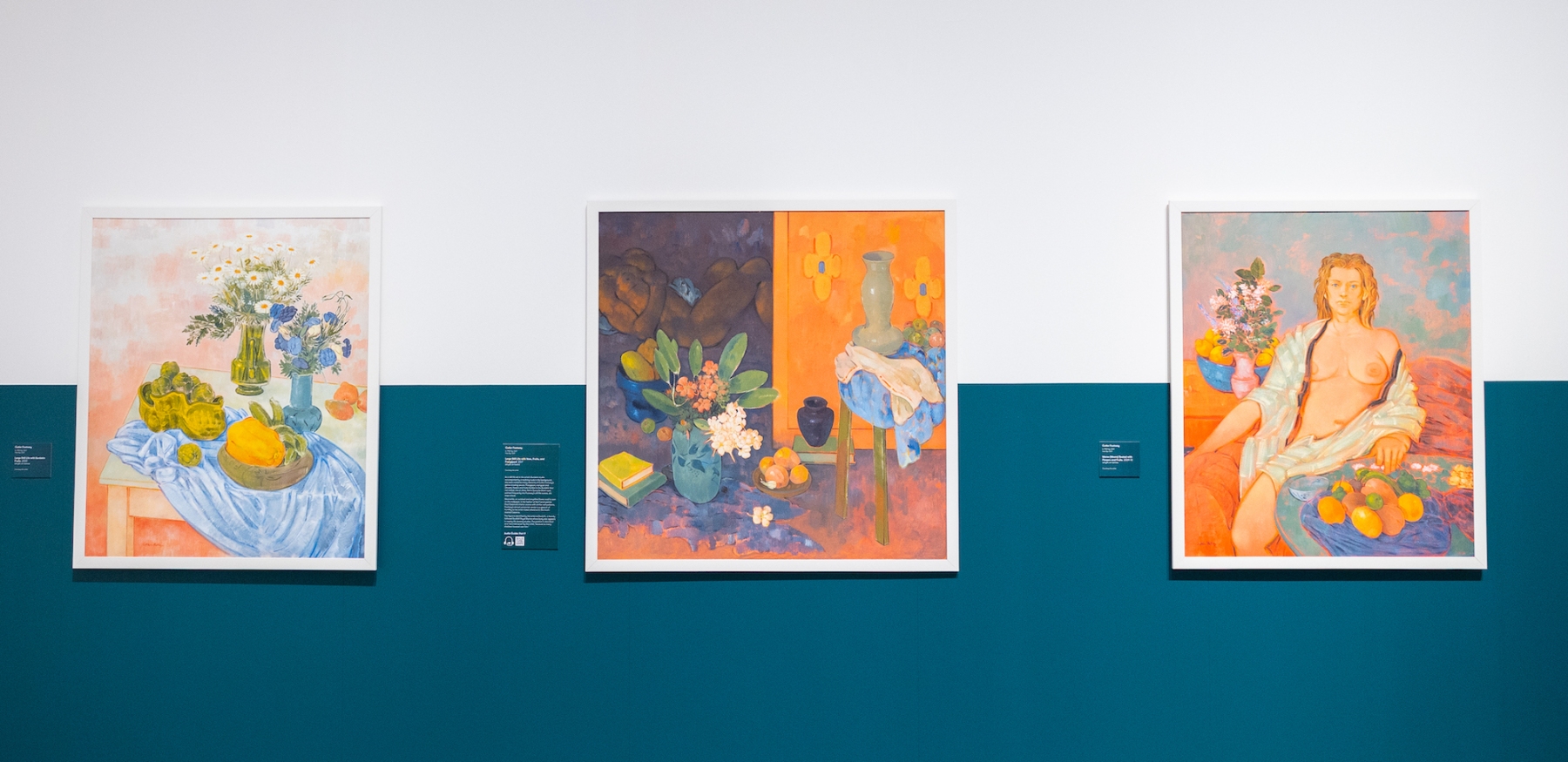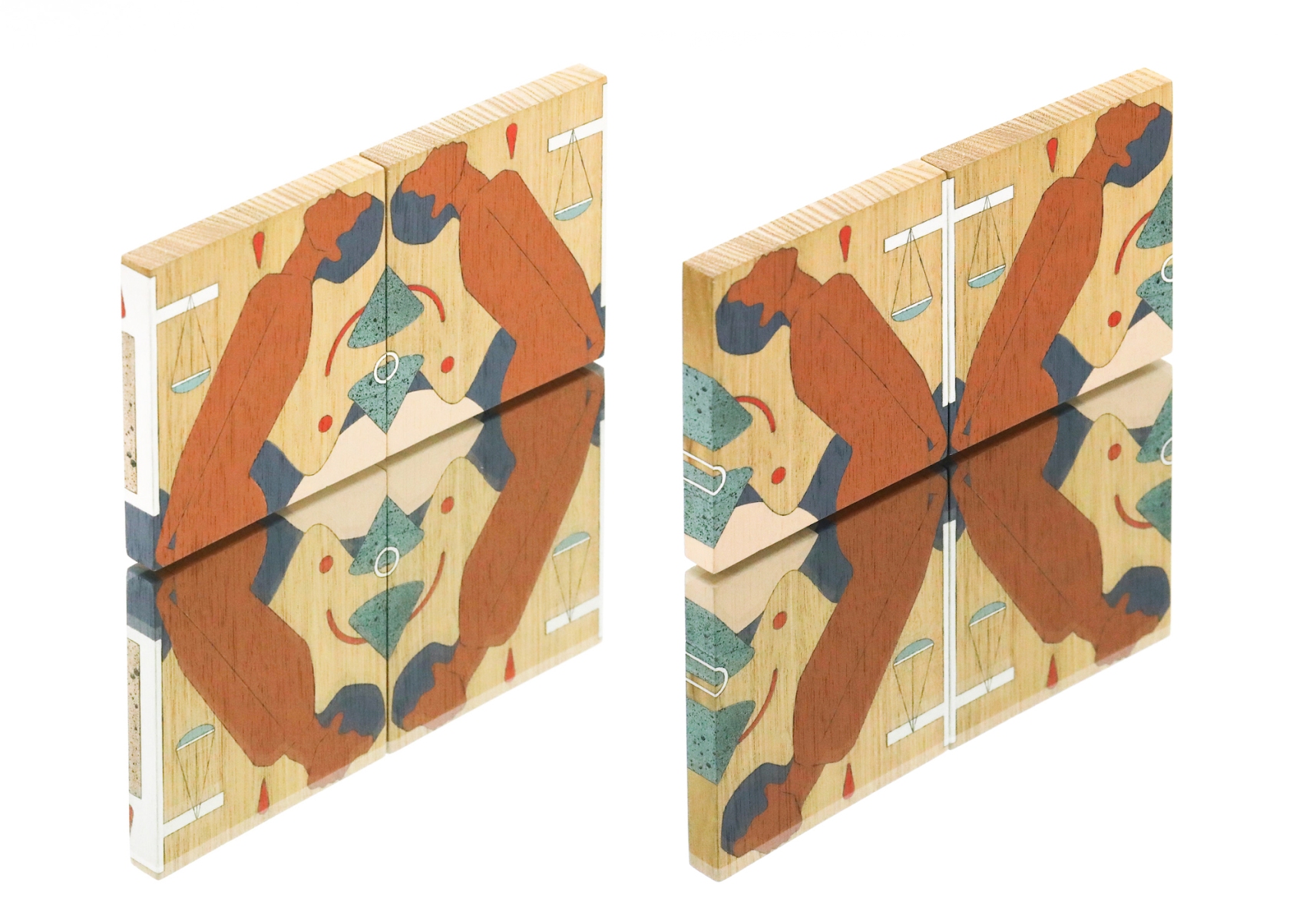From A Burdekin Studio: Works by Cutler Footway is currently on display at the Rockhampton Museum of Art. This bright and open exhibition is a fresh and appealing display of the works of rural artist, Cutler Footway (Bruce James). Footway is based in Ayr, a town on Bindal and Juru Country. The former art critic has dedicated two decades to his art practice, incorporating classic art media, mainly in the form of acrylic painting, resulting in expressive and detailed artworks. As you enter the gallery, his paintings show the distinct influence of art styles, like the European Renaissance and Expressionism, resulting from his love for art history. Moreover, Footway communicates his sexuality as an artist living in an agricultural region through his landscapes, still lifes, and studies of the human body studies, specifically the male nude.
One of the initial impressions of the exhibition is Footway’s use of vibrant acrylic pigments to create detailed and beautiful stories. Two artworks are notable in this respect: Dry Tropic Bush – The Burdekin (2018–2019) and Verandah Piece – Model at Rest (Dimi) (2023). Both show how Footway composes his work to express the personal context of his life.
Compared to his other works, Dry Tropic Bush is smaller and unique in its circular format. A matte texture shows detailed plant life on rough terrain, a representation of the Burdekin landscape conveyed by subtle line work and brush strokes. Cool greens and blues with reddish tones create a soft, calm scene that conveys harmony and union in its composition. The circular frame creates the effect of looking through a window or lens onto the landscape, so notably important in the artist’s life. This technical composition allows viewers to understand Footway’s personal experiences and emotional connections to the land. Verandah Piece also shows how Footway expresses himself. The large size of this work makes it more notable. Displayed in relation to the neighbouring round work amplifies the details in each corner of the canvas. The scene is a combination of still life, landscape, and portraiture. A man in a relaxed posture is seated on a chair, seemingly vulnerable, with only a vibrant orange blanket covering him. A (possibly) culturally significant sculpture, and household décor, enhance the domestic and personal context of the scene. The Burdekin landscape background indicates the evident influence of Footway’s hometown on his artworks. The line work and tonal balance create a soft, intimate mood, which introduces an emotional depth to the scene.
Footway’s collection of sketches, Life Drawings (2003–2022), further highlights the connection he has with his subjects. These differ from Footway’s usual style of painting: a gallery wall is dedicated to human body studies drawn with differently coloured crayons. There are 24 in total, sketched across two decades, each titled with the name of the model. The studies interchange between nude and partially clothed models, each focuses on different parts of the body, and are all evidently personal. The technical application of line, enhanced by colour and proportioning, conveys how Footway creates art to express his sexual identity and personal relationships. With each piece named after the model, Footway demonstrates his knowledge of each sitter; this also shows through his expressive and intimate depictions of the body.
The exhibition of Footway’s artworks is a beautiful exploration. It is worth viewing as a significant display of how an artist can express their sexuality in a rural community. The curation of the exhibition enhances this: most of the artworks hang on two-tone dado treated walls, which match the hues of the works. This deliberate display highlights the relationships between the paintings and conveys the personal context of the works.
– Lauren Howard
A survey exhibition of Cutler Footway’s body of work – featuring landscapes, portraits, and still life paintings – gives an insight into Footway’s life as a gay artist living in the Burdekin region.
Walking into the exhibition, you are greeted by Marcus Leutscher with Cane Fire, Figurine, Flowers, and Skull (2019–2020). This large painting encapsulates the three subject matters showcased throughout the shows. Around it and many other works within the gallery space, the wall displays a dado treatment: the lower part of the wall painted with a colour to match the art.
Motifs recur in multiple paintings, telling the story of Footway’s life and where he lives. Cane fires in the background of some paintings represent the harvesting technique of cane used around Ayr, where he lives. Other objects are incorporated because they often hold personal significance to the artist, as trinkets from places important to him or gifts he has received from his friends. Footway’s painting style has similarities to Impressionism, with visible, loose brushstrokes. His selection and use of colours, bright but soft, applied in a colour blocking technique with lines indicating form rather than tone, is consistent throughout the show.
In the middle of the gallery is a series of 24 observational studies of models. The use of line and hatching to represent the human form is expertly exploited, showcasing the knowledge Footway has of this subject. An easily accessible art material, the use of coloured oil crayons shows that well-made art does not need expensive tools, only practice and dedication. Another important feature of these studies is how each model is named in the title of the work, making the drawings more than studies but portraits of each model. The naming also reveals how Footway would form a relationship and friendship with his models and often used models in multiple paintings.
From a Burdekin Studio: Works by Cutler Footway allows viewers to travel through the gallery and explore Footway’s works and themes. The painted walls and mass of paintings create interest and personality, making no moment dull. Although the exhibition may not be suited to young children and some crowds, due to its multiple nude portraits, it is an excellent experience.
– Jacinta Bennett
image: 3.-large-still-life-with-burdekin-fruits.-courtesy-of-rmoa.jpg
caption: A painting on a part white, part teal walls depicts a tablecloth with vases, flowers and fruits; the imagery gentle teeters to the right
alt: Cutler Footway, Large Still Life with Burdekin Fruits, 2009, acrylic on canvas. Rockhampton Museum of Art
Cutler Footway: From a Burdekin Studio is a survey exhibition of the artist. Footway’s speciality lies within canvas paintings that use an assortment of vibrant and pastel acrylics. Despite the acrylic medium, Footway’s artworks are suggestive of Impressionist oil painting, with the pieces on display showing both the influence of Impressionism and the artist’s adoration for this style.
The exhibition features many of Footway’s iconic, light pink pieces, yet it’s an eye-catching work in blue that stands out from the rest. Basket of Shells (2018) shows a woven basket filled with differently-hued blue shells. It is particularly interesting due to its duality: the main, dark blue tones convey an atmosphere of sadness and can be associated with masculinity, yet the form of the shells evoke a more feminine and vital feeling. The basket harbours the blue shells, acting as a vessel that can carry both feminine and masculine qualities. These elements combine to create a self-expressive mood that allows the artist to explore his sexuality.
Another striking work is Footway’s Large Still Life with Burdekin Fruits (2009). This depicts glass and porcelain vases, one filled with daisies and the other with blue and white roses, alongside an assortment of fruits, some of which appear to be bananas and capsicum. All are presented on a cream table with a light blue cloth. Finally, the piece is completed with Footway’s iconic light salmon background. Large Still Life appears to reveal a personal connection with Footway, sharing fruits typical of the place where he was born. It also lends itself to symbolic interpretation: blue roses and the capsicum communicate strength and overcoming obstacles, which may relate to Footway’s creative struggles as both an artist and a writer. Other elements, such as the gold bowl and the fruits, suggest abundance, hinting at Footway’s current success as an artist. The work suggests that determination and persistence are necessary ingredients to ‘bearing the fruits’ of hard work.
From a Burdekin Studio is a meaningful exhibition that showcases Footway’s impressive depictions of still-life, landscape, and figure painting. Footway’s art is an expression of himself as an artist and a gay man. The composition of his paintings are simple yet arresting, with each piece standing out in its own right. This is an excellent exhibition, which should be visited by both followers of and those newly acquainted with Footway’s work.
– Lily Edwards
Lauren Howard was a participant in the Visual Field: Arts Industry Insights for Teens. This three-day immersive professional development program is a partnership between Flying Arts Alliance and the Institute of Modern Art. In 2023, the program was hosted regionally for the first time at the Rockhampton Museum of Art. These reviews received editorial support from the Institute of Modern Art.







